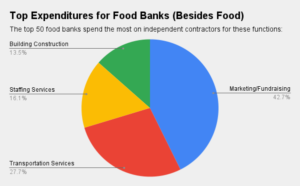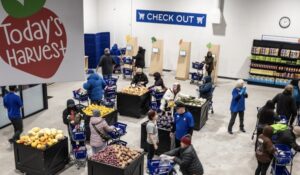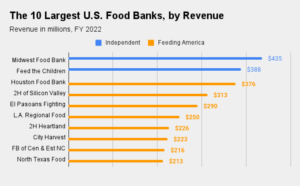A food bank in Florida is the largest in the state and among the ten largest in the U.S., but was mistakenly omitted from the Food Bank News ranking of the top ten food banks by revenue, published in September.
[For our latest information on the scope of the food banking sector, please see our 2021 Directory of the Top 300 Food Banks.]
Farm Share of Homestead, Fla., reported revenue of $146 million for fiscal year 2019, making it the eighth-largest food bank in the country. The ranking also makes Farm Share the country’s third-largest independent food bank (meaning that it is not part of Feeding America’s association of roughly 200 food banks and approximately 75 partner distribution organizations).
As a standard measure reported annually, revenue offers a way to understand the charitable food sector as a whole. Revenue is an indication of the resources (and influence) a food bank has on hand to fight hunger. A ranking of food banks by revenue allows food banks to compare their programs and goals against other similarly-sized organizations, helping them to benchmark the scope of their activities, as well as engage in knowledge-sharing across the sector.
Farm Share started out in 1991 as a food rescue organization for farm produce. Accordingly, Food Bank News categorized Farm Share as a food-rescue organization in its January 2020 article, “How Many Food Banks Are There?”

However, Farm Share has greatly evolved since its inception, adding non-perishable food from the government’s Emergency Food Assistance Program (TEFAP) and other sources. Five years ago, it was about evenly split between distributing perishable and non-perishable food, said Stephen R. Shelley, President and CEO. Since then, the share of non-perishable food has grown to about 75% of the 104 million pounds distributed last year, he said.
So while Farm Share is still best known for distributing produce, “we’ve expanded substantially in terms of diversification,” Shelley said, transforming it into more of a traditional food bank than strictly a food-rescue organization.
Shelley became the head of Farm Share in 2019 after three years of serving as its COO. Before that, he owned and operated his own law firm.
Farm Share serves all 67 counties of Florida through a network of six warehouses and storage facilities, and close to 2,000 agencies. It also partners with community leaders and government agencies to do large-scale food distributions to 500 to 1,000 households at a time in rural areas that are not well served by other entities. “We did about 500 of those last year,” Shelley said.
In addition, Farm Share sends multiple truckloads of food per week to various large area agencies and regional food banks, which distribute the food in turn. It is also active in disaster relief throughout the state.
The produce that Farm Share rescues from farms is perfectly edible, but unable to be shipped for retail sale, often for cosmetic reasons. Managing the perishable food is a “logistical challenge,” requiring a balance between sufficient refrigerated storage and enough refrigerated trucks to move the food out of storage, Shelley said.
One way in which Farm Share differs from many other food banks is in not charging a shared maintenance fee for food. This was a principle of Founder Patricia Robbins, who saw the fee as a form of taxation on the community. “We want to make sure we’re not doing that,” Shelley said.
Looking forward, Farm Share is looking to add another strategically located warehouse or two, and wants to continue to increase its presence in the state. “We’re always looking to grow,” Shelley said.
Like what you’re reading?
Support Food Bank News















